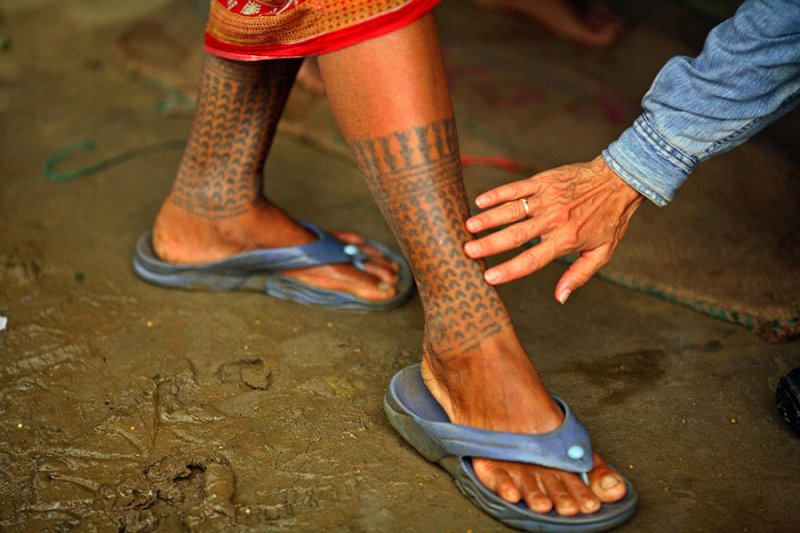From ancient times to the modern,Tattoo is an art which has been printed on the skin.
Tattoo, in Nepali community, is a trend which has been alive since the early times. There are some places where getting a tattoo is their tradition—it lies in their culture, whereas there are people objecting it too.

Newars, Tharu, Gurungs, and Magar communities have been practicing it as their tradition, it was the social aspect of their lives.

The tattoo is also known as Leela in Tharu and is popular more among the women compared to the men. It is usually done before getting married and is considered as a beautifying process.
The Syashyas of the Newar community had their hands inked. The women usually fill their legs, area above the ankles with different tribal designs and patterns. They usually ink themselves, as their designs are usually big and it takes time.

With different communities having their own pattern, Gurung and Magar women have a trend of decorating their faces and near lips with designs of sun, moon and the stars. However, in the southern part, the culture is less prevalent.

Back in days, organic materials were used by the people to produce color. They used coal along with the extract from certain plants. Mustard oil and cow dung are traditional ointments used as ink and thorn from Neem trees to imprint a tattoo.

Looking at the olden days, the significance of having tattoo was different from the trend that we have got now. Before, it was a belief that one will find solace in heaven if they had a tattoo. It was believed that getting inked brought good fortune to the family. Some even believe that the pattern of getting their face inked began in old days when the lord used to take any ladies they wished. To keep the ladies safe, they began making face outlines to prevent the other lords from taking their ladies. These beliefs have faded now, causing tattoos to be seen as fashion rather than a tradition.


